So. Mykonos. I have to say I had lower expectations for this
destination on my recent trip to Greece. I don’t revel in all-night parties
anymore (I am sounding a bit like yiayia) and Mykonos reputation as a party
island left me unsure as to what to expect. However, it was love at first sight
when I saw the stark white cubist architecture, aqua blues of the sea and waterfalls of hot pink bougainvillea. This guide brings you the more tranquil, low key side of Mykonos – where you
can get to hang out with some of the locals and get in touch with the islands core traditions.

Getting there
By air: On our recent trip, we flew from Venice to Mykonos with Aegean Air. Olympic Airlines and a host of other small European airlines, such as Ryanair also fly to Mykonos direct from Athens at relatively low prices. There is an KTEL bus service which runs from the airport to the main square called “Fabrika” – just up the hill from Mykonos chora. Tickets are usually around the couple of euro mark and the timetable is seasonal.
By sea: If you prefer to go by sea, several daily
ferries link Mykonos with Piraeus and Rafína (much closer to
Athens airport) via other islands, while services to other islands like Crete
and Santoríni are also offered almost daily in season. It is worthwhile noting
that larger ferries and cruise ships dock at the new port, 2km from town. A
taxi-boat links ports old and new for the cost of a couple of euro each way.
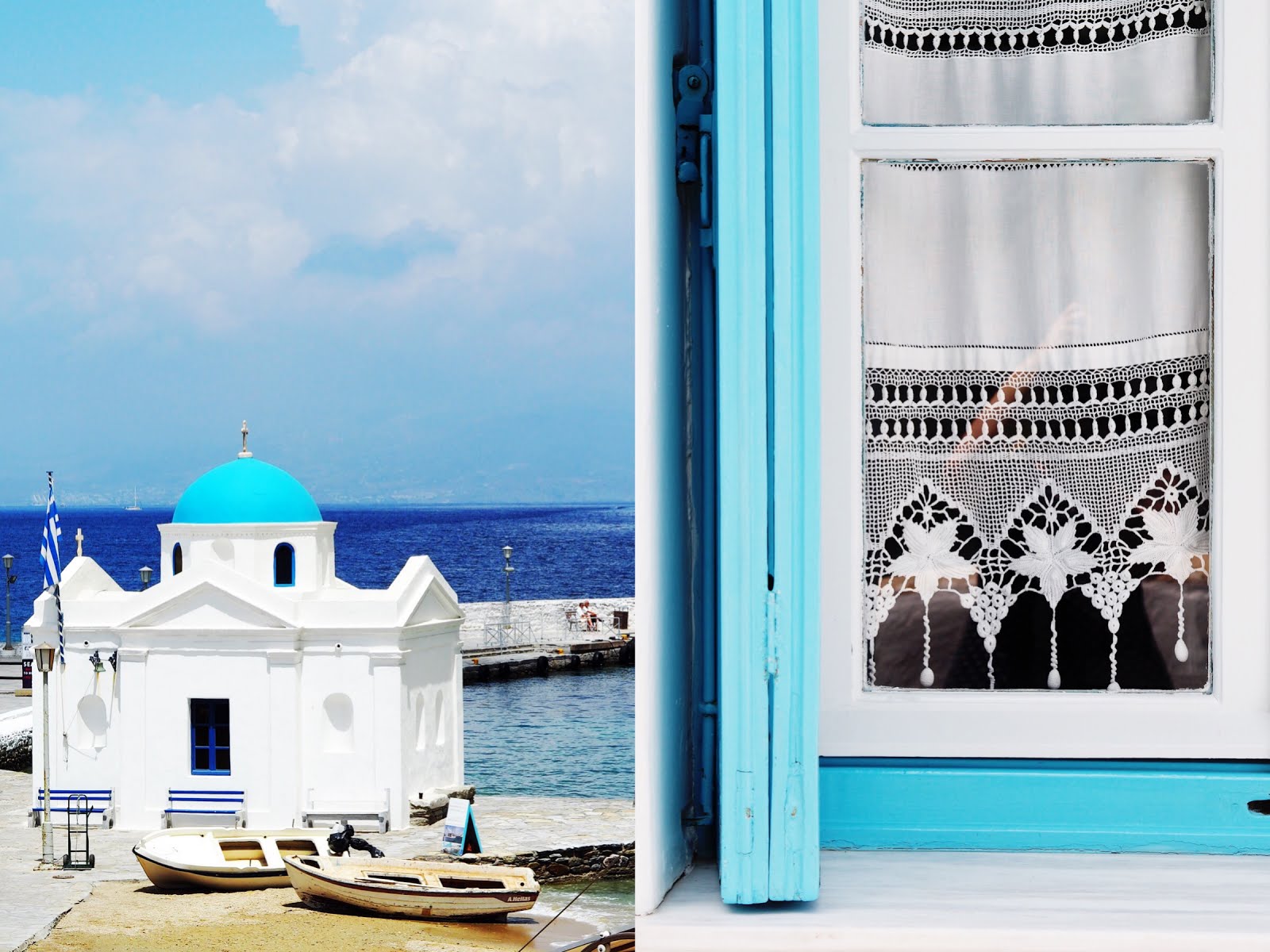
Checking in
My lovely brother in law has been a long time devotee of
Mykonos. We stayed at his preferred spot, the Apollon Hotel which overlooks the
beautiful harbour of Mykonos. The best reason to stay here is to meet the
wonderful Kyria Maria Paoula, a Mykonian legend – a few years shy of 80. We
like to think of Kyria Maria as the Queen of Mykonos.
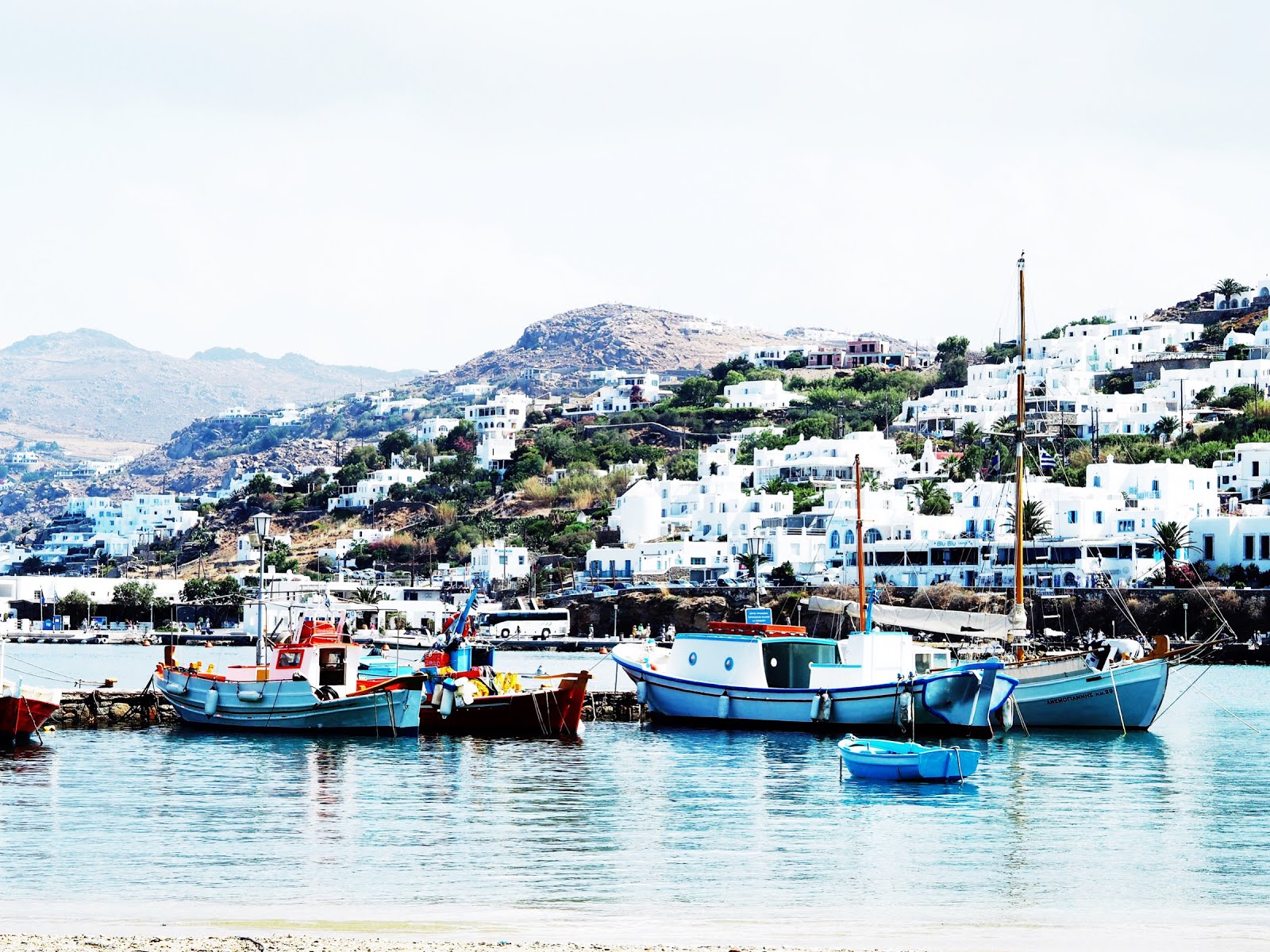
| Kyria Maria in her favourite spot, on the balcony of the Apollon looking over Mykonos Harbour |
Kyria Maria’s grandfather established the Apollon as the very first hotel on Mykonos in 1930. The primary clientele of the hotel, at this time, were archaeologists exploring the ancient site of Delos. More than 87 years later and the Apollon Hotel still remains, with Kyria Maria at the helm. On arriving, we walked along the harbour front with our bags in tow to receive the warm greeting of Kyria Maria waving to us wildly from her balcony, like we were old friends. As we reached the top of the stairs we were showered with kisses and compliments from Kyria Maria with many questions about the health of our family back home.
| Kyria Maria and Mykonos Harbour circa 1950s |
The Apollon offers simple rooms, without
complication. Our small double room had air-conditioning, a small fridge and
one modern concession, wifi. There was no TV, but who would need that with the
sites of Mykonos right on your door step. A shared bathroom was at the end of
the hall, which you reach after passing through the salon of antique furniture from Kyria Maria’s
grandfather’s time. A host of portraits of Mrs Maria’s proud Mykonian
ancestors look down on you as you make the dash to the bathroom. The Apollon has a regular schedule of returning guests, just like my
brother in law. If you manage to make a booking, (children are not welcomed) it is the best place to
experience the real Mykonos and meet the warm and wonderfully welcoming Mrs
Maria. If you are staying here it also helps to
speak a little (or a lot!) of Greek. While Mrs Maria speaks some English, you’ll
miss all of her stories of the old days (and new) as well as cheeky jokes and
good humour if you don’t speak a little Greek.
Apollon Hotel
Gialos, Chora, Mykonos, Greece
Other family run hotels include:
Carobonaki Hotel: this family-run hotel has been welcoming visitors since 1961 and was renovated in 2013 but still retains a traditional Cycladic ambience. (www.carbonaki.gr)
Nazos Hotel Mykonos: A traditional family-run property, with 14 rooms, built in the style of the local architecture. (www.hotelnazos.com)
Philippi Hotel: A clean, cozy family owned hotel, right in the middle of old Mykonos town. (www.philippihotel.com)
Getting around
The local Bus service is the cheapest means of transport in
Mykonos Island. There are two main bus stations. North station is located
behind the archaeological museum, near the telephone company building. From
this station you can go to north and east part of the island: Agios Stefanos
,Tourlos, Kalafati, Elia, Kalo Livadi and Ano Mera. South station is
situated in the square Fabrika. From here you can visit Ornos, Agios Yannis,
Plati Gialos, Psarou, Paraga, Paradise and the airport. Ticket values depend on
the destination but are inexpensive. Bus frequency varies according to the
tourist season (low or high) - make sure to check with the driver for bus
times, especially for your return journey.
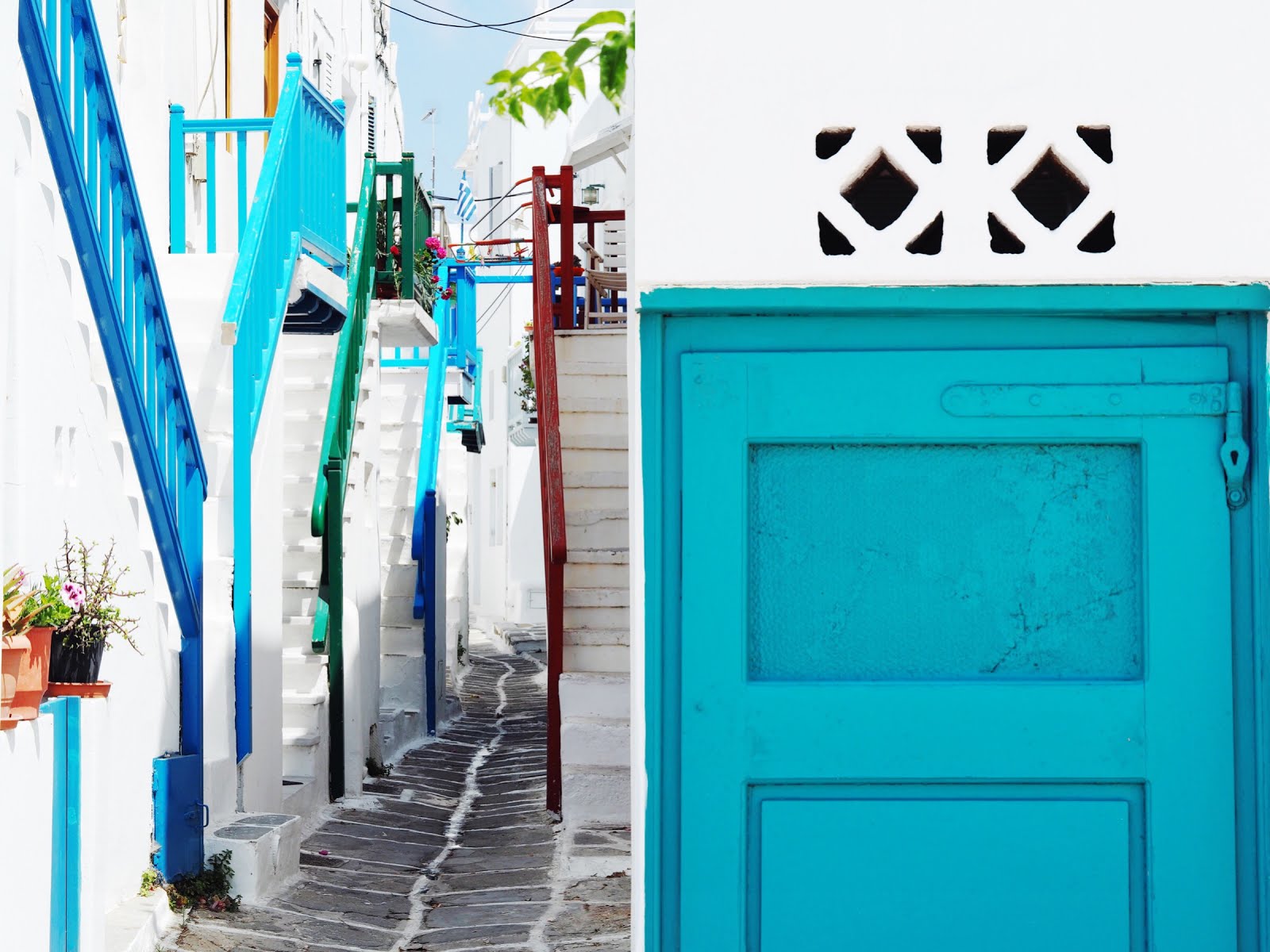



What to eat
While you will see from my last post about the island of
Naxos, that it is really the food bowl of the Cyclades. However, Mykonos still
retains some locally grown produce, farm-raised livestock and of course, fish
from the surrounding sea. Indeed, the core traditions of the
island are most evident in the thriving local cuisine built around the simplest
of produce: fish, barley rusks, onions, sheep/goat milk and the pig.
Rusks (called paximadia in Greece): twice-baked bread, usually made
from rye flour, they are shaped in thick wedges or into smaller bite-size
pieces. An ancient food, rusks were the food of Mykonian fishermen, as they are
completely dry with low moisture and last forever. You can also find a
sweet version of paximada, usually flavored with currents and spices – similar
to an Italian style biscotti.
Goat cheeses: The best known Mykonian cheese is the
spicy kopanisti. It has a tang similar to blue cheese, which comes from
the fact that it is fermented in clay jugs over several months. Traditionally
Kopanisti is used as an appetizer and often as an accompaniment to ouzo since
its sharpness nicely counters the sweet aniseed flavour of the drink. There is
also the less well known cheese, Tyrovolia, a soft fresh cheese which is
used in the island’s famous onion pie and also in the ‘melopita’, a sweet
cheese pie.
| L-R: Loukaniko drying in the sun & the classic meze, Mostra |
Fish: get to the old port early to catch the small
fish market (varying from one to three fishermen). Here you will see the most
beloved of Greek fish, barbouni, which are pan fried with tomatoes and capers.
You might also see a variety of smaller fish, such as the bright organgy-red
scorpion fish, which is used to make aromatic fish soup.
Mostra: this wonderful meze combines the islands
spicy kopinisti cheese with rusks. A generous amount of cheese is spread over
the moistened rusk and topped with flavourful local tomatoes, olive oil and a
good sprinkle of rigani plus an olive or two. Mostra is perfect to
share, accompanied by an ouzo, raki, or tsipouro.
Loukaniko: (sausage) walk around the alleyways of
Mykonos and you will see loukaniko hanging from home windows to dry in the sun.
The pork
sausages are seasoned with spices, salt, oregano, and pepper. They also have a
much higher content of lean meat and less fat than other types of sausages made
in the region. Order as a meze and you will get a sizzling hot pan or plate of
fried sausage, nicely starting to caramelize on the edges, cut into perfect
bite sizes pieces.
Louza: another pork product, louza is made from the entire fillet from the back of the pig. It is dried out and cured under the early winter sun with salt, pepper and spices. The herb 'savory', locally known as 'throubi' which grows wild on the island is a one of the main flavorings. It is kind of like a Greek prosciutto and served in paper thin slices Another must have meze dish.
Amigthalota (almond cake/sweet): always present at festive events such as weddings, baptisms and family celebrations, these pastries can take two forms. First is the elongated cookie covered in powdered sugar. The second is known as the 'kalathaki' or basket, which is an almond cake baked in a small cupcake wrapper.
Kremidopita (Onion Pie): made with a local cheese tyrovolia (mentioned above,)and plenty of dill Mykonos’ onion pie is famous. If you are lucky, you might be offered a homemade slice, otherwise you can find it on the menus of some traditional taverna.
Where to eat and drink
Psillos Bakery, Mykonos Town: hit the streets of chora early and follow the line of locals to Psillos bakery. Wonderful bougatsa and spanikopitas are available, perfect for a quick breakfast or one to stash away for a treat later on when you arrive at the beach. There are plenty of traditional rusks and sweet paximada - and the currant studded kolouria is completely addictive.

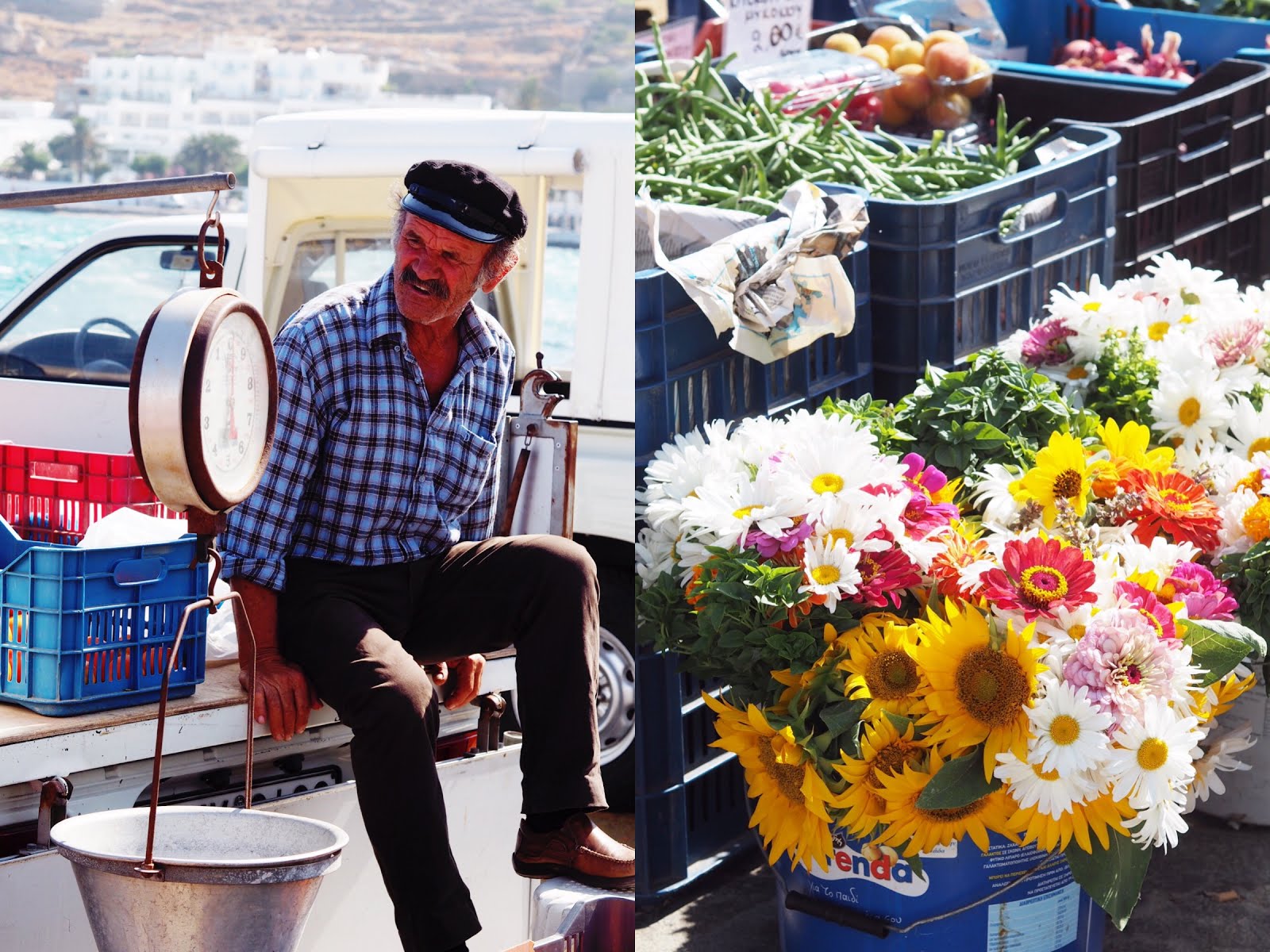

Farmer's & fish market, Mykonos Town: join the locals on the waterfront to pick up some fresh fruit for beach picnics, or if you happen to be self catering - vegetables, olive oil, wine and fish! There are usually a couple of farmers and on some days - the catch of the day off the boat. Best to get there early!
Farmer's & fish market, Mykonos Town: join the locals on the waterfront to pick up some fresh fruit for beach picnics, or if you happen to be self catering - vegetables, olive oil, wine and fish! There are usually a couple of farmers and on some days - the catch of the day off the boat. Best to get there early!
Vioma: a vineyard and farm that is open to visitors, serving organic food. Here you can taste many of the traditional products of Mykonos, such as tyrovolia, kopanisti, louza, amygdaloto, along with the vineyards wines (www.mykonosvioma.gr)
Kiki’s Tavern, Agios Sostis Beach: is a Mykonian institution with divine grilled meats and an array of creative salads. You can watch your giant pork chop, prawns or chicken being grilled outdoors on a charcoal barbecue - as there is no electricity at Kiki's. Bookings are not taken and you need to line up from mid morning onwards to secure a table. The progress of the queue depends on the memory of the owner, who takes mental notes of each person and the time of their arrival. The wait is more than comfortable, as there is complimentary wine on tap and a great swimming beach, Agios Sostis, just below the taverna.



Nikolas Restaurant, Agia Anna Beach: renowned for traditional home-style cooking, a lot of the produce from this taverna comes from the family farm. Choose Greek delights ranging from quail and rabbit stifado to local onion pie.
....don't forget to end one of your days with a sunset drink in Little Venice at one its many waterfront bars....
Nikolas Restaurant, Agia Anna Beach: renowned for traditional home-style cooking, a lot of the produce from this taverna comes from the family farm. Choose Greek delights ranging from quail and rabbit stifado to local onion pie.
....don't forget to end one of your days with a sunset drink in Little Venice at one its many waterfront bars....
What to see
Visit the beaches: Ayia Anna, Agios Sostis and Agrari are all spectacular.
Walk through the twisting alleyways of old Mykonos town’s Chora at first light… when all the streets are deserted before the tourist shops open.
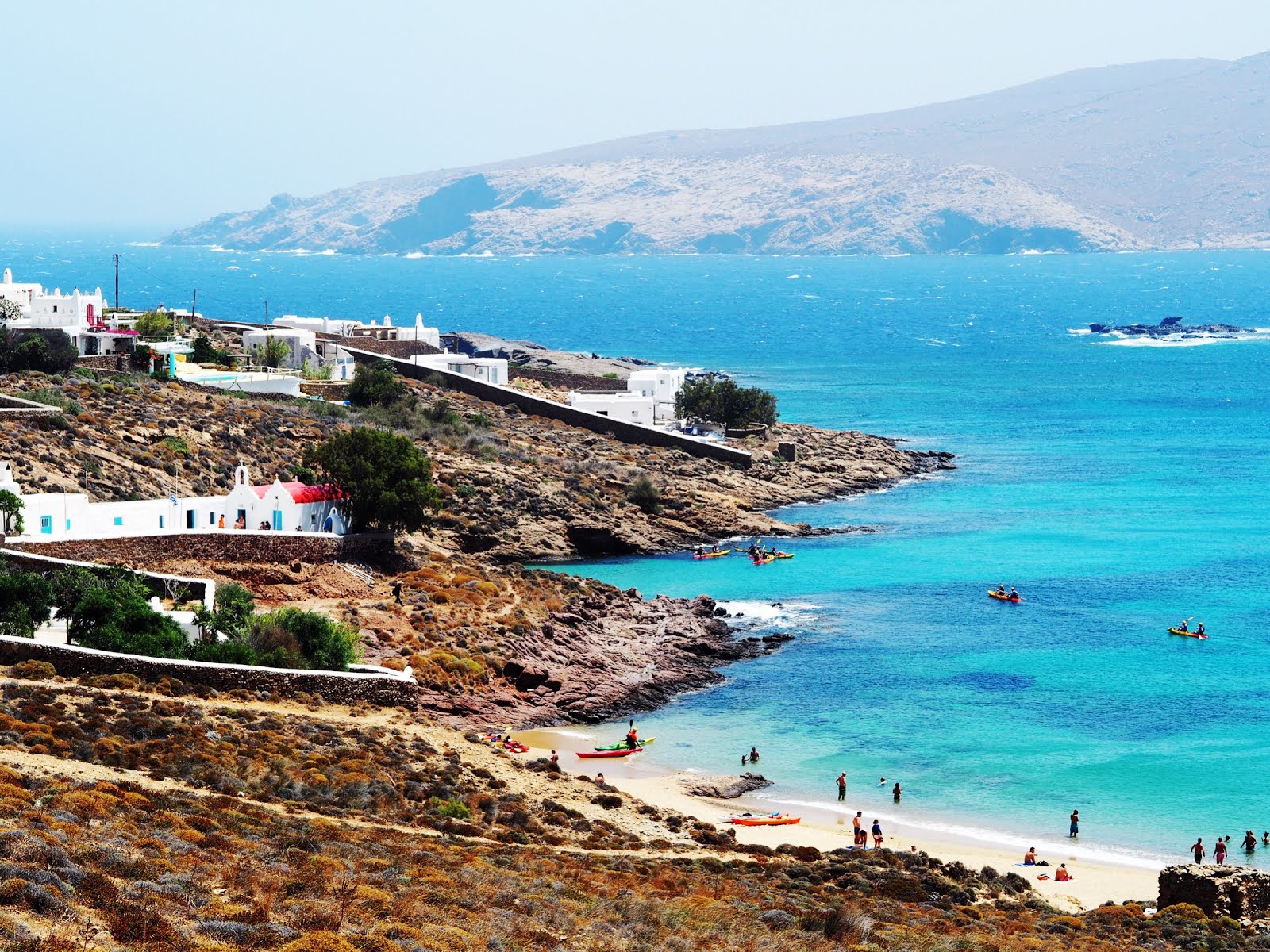


Get a culture fix and take the ferry to nearby Delos, the birthplace of Apollo, god of light, and his twin sister, Artemis. Delos is one of Greece's most significant archaeological sites and was once revered as a sacred sanctuary. If you take the steep ascent to Mt Kythnos, you can enjoy the 360-degree views of the islands that form a circle around Delos.
Walk through the twisting alleyways of old Mykonos town’s Chora at first light… when all the streets are deserted before the tourist shops open.
Get a culture fix and take the ferry to nearby Delos, the birthplace of Apollo, god of light, and his twin sister, Artemis. Delos is one of Greece's most significant archaeological sites and was once revered as a sacred sanctuary. If you take the steep ascent to Mt Kythnos, you can enjoy the 360-degree views of the islands that form a circle around Delos.
No comments
Post a Comment
Thank you for your comments, I really appreciate every single one!